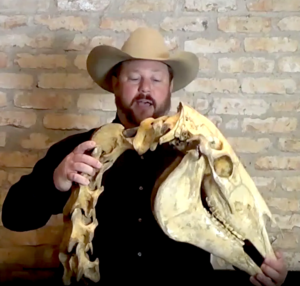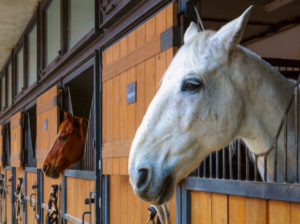We love to hear from listeners and contacting us is easy here.
We offer these shows for free. If you think it’s worthy of a small contribution, we sure would appreciate it.
 We’re dedicating another show to horsey intellectualism. Intellectualism roughly means thinking, studying, and/or discussing complicated ideas without getting emotional. I guess what we do on this show is a sort of low-level intellectualism, redneck intellectualism, because we’re not consulting great philosophers or significant texts. But we are bouncing around ideas that are complicated and less straight forward than a lot of articles or social media posts seem to make them.
We’re dedicating another show to horsey intellectualism. Intellectualism roughly means thinking, studying, and/or discussing complicated ideas without getting emotional. I guess what we do on this show is a sort of low-level intellectualism, redneck intellectualism, because we’re not consulting great philosophers or significant texts. But we are bouncing around ideas that are complicated and less straight forward than a lot of articles or social media posts seem to make them.
I think owners and riders inevitably come across these ideas in their time with horses. I know I do, sometimes as I’m riding along, sometimes as I’m lying in bed, pondering a life with or without equines.
Not much is black and white. There’s a lot of grey area to consider when it comes to, well, everything, but in this case, horse care and management. Doesn’t it seem like there has been a lot of outrage and side-taking lately? Maybe we could be doing more listening and show a little more curiosity?
Anyway, for episode 4, I invited Daniel Dauphin, the Louisiana horseman whose specialty is bit function and design and horse mouth anatomy.
 Thankfully, he’s not one to shy away from what he calls ‘career suicide’ by saying things that might not be in step with the latest money-making trend or attention-grabber. I was happy to bug him for this continuation of a related chat with Nina Fuller last week in which we talked about livestock and our agrarian lives.
Thankfully, he’s not one to shy away from what he calls ‘career suicide’ by saying things that might not be in step with the latest money-making trend or attention-grabber. I was happy to bug him for this continuation of a related chat with Nina Fuller last week in which we talked about livestock and our agrarian lives.
Daniel and I bounce around the ways in which people perceive the treatment of animals. What does abuse look like? Certainly, it looks different to different people. How is that so? And, what does the horse want and need? Can we decipher that objectively or do we get misdirected by questionable motivations?
Thanks to our title sponsor, Lucerne Farms, producers of quality forage feeds, extremely handy and healthy bales of alfalfa, timothy, and grass blends. A great addition or substitute for your hay or grass and way better than grain. They also make products for your stalls and chickens. Check them out at lucerne farms com
Watch Daniel Dauphin’s BHPS presentation.
Check out his YouTube channel.

Horses kept in stalls suffer physically and mentally
As I mentioned in the last episode, horses are livestock. When it comes to laws and policies, that puts them in roughly the same category as sheep and cattle, not dogs and cats. Over the last few generations, however, as an increasing percentage of horses are used for exclusively recreational purposes. In popular culture, barn culture, in a materialistic and consumer-driven world, the species has moved into a fuzzy space between livestock and pets. American laws, for instance, are sometimes at odds with prevailing attitudes. It can be messy.
And, yes, we know that the practicality of putting horses together at Olympic events is probably problematic. But why not, for instance, put them in with other horses they know? Seabiscuit traveled with a companion. Rodeo horses are put together. I could be cynical and say it’s all about money, but can we think outside the box – even if it is lined with locally sourced shavings?
We can’t wait to hear from listeners. What do you think about animals in our society?
How do we balance old standards of agriculture and animal treatment with where we are now and what we know now and, for us horse owners, what we need and want from our equine partners?
It doesn’t escape me that Daniel and I live rural existences, maybe more rural and old fashioned than many listeners. Our points of view come from cumulative observation and interaction with land and animals. Your days and interactions are not our days and interactions. That’s one reason I’m interested in hearing from your shared or different perspectives.
Watch Daniel Dauphin’s BHPS presentation.
Check out his YouTube channel.
Thanks to Redmond Equine for generously sponsoring our show. With the warm weather and the turn of the season, make sure to have Redmond’s salt available free choice for your horses. We think they’ll love it. You can hang the Rock on a Rope on a fence or in the stall. Order a box full at Redmond equine dot com.
Also thanks to Patagonia WorkWear for their continued support. I hope you can check out their hemp full zip sweatshirt. It’s probably the softest, yummiest sweatshirt I’ve ever owned. And it comes in a buttery yellow that makes me smile. Also, check out the tough hemp canvas vest – extremely handy for all seasons but especially fall.
Give us feedback, suggest a topic or guest, or make a donation and you’ll be automatically entered to win a free Patagonia WorkWear item that we give away every month. Redmond Equine is sending a complimentary syringe of Daily Gold Stress Relief to everyone who drops a tip in our donation jar. Pretty cool and a $15 value. If you get something of value from our podcast, please consider making a donation. We sure would appreciate it.
That’s it. Another episode in the can and out of the barn. Thanks for listening y’all.